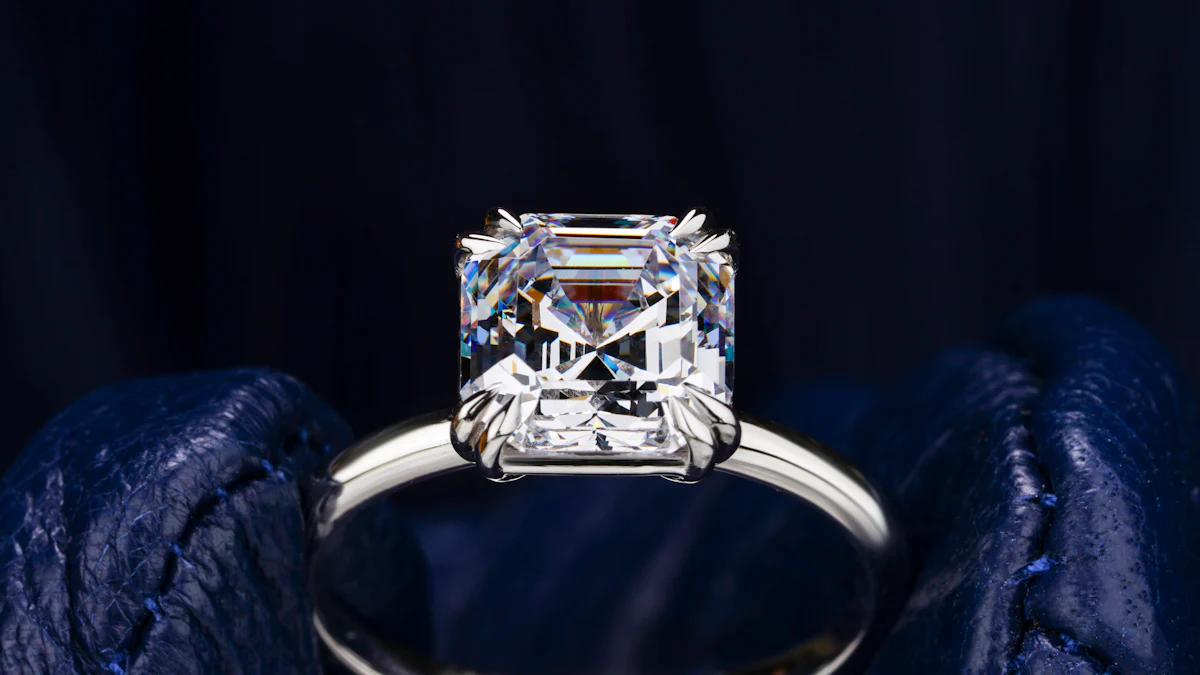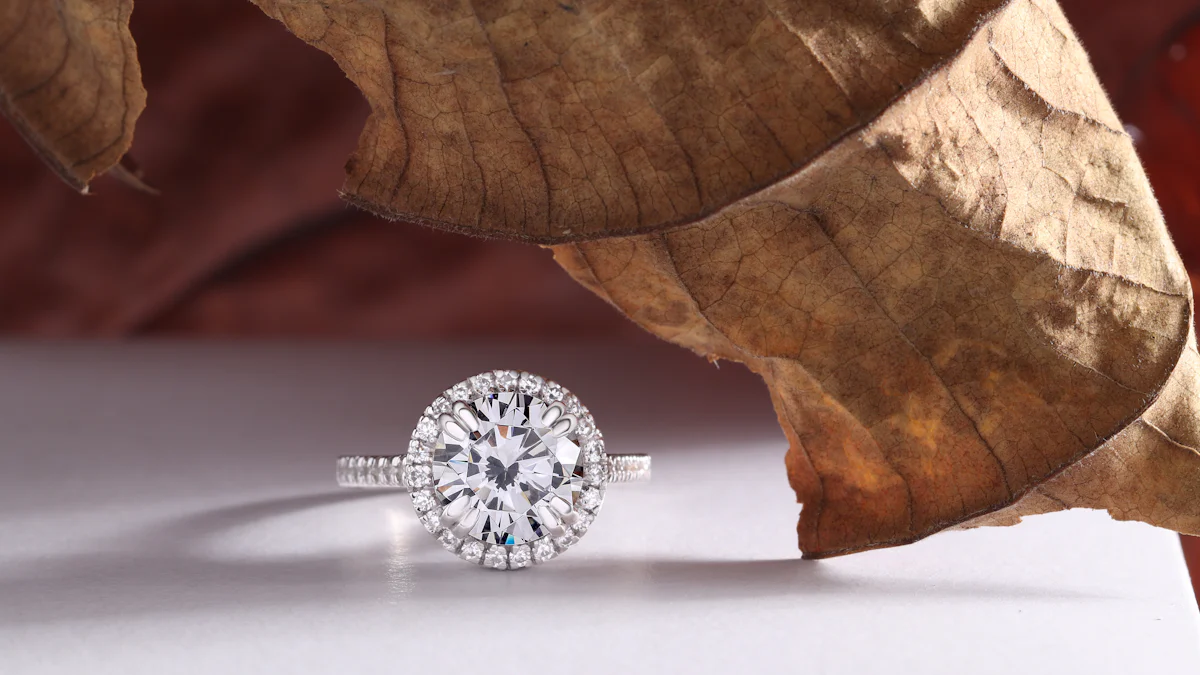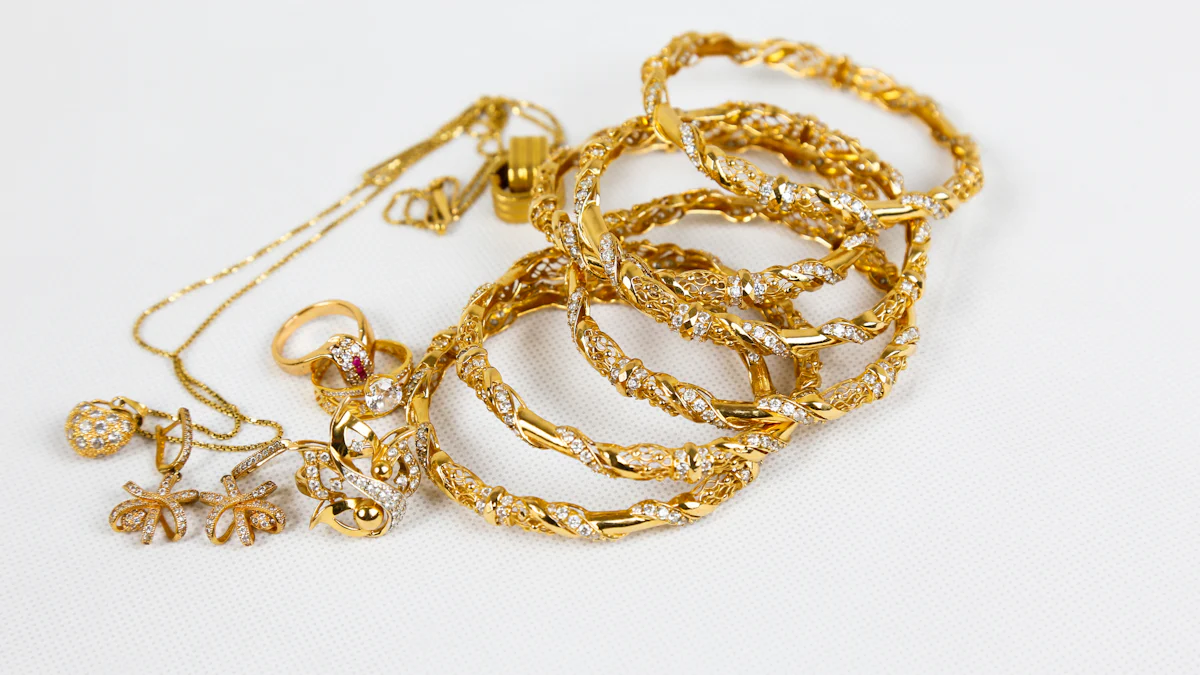What Does TW Mean With Jewelry? Key Differences

When you shop for jewelry, you may notice the term "TW" in product descriptions. But what does tw mean with jewelry? It stands for "total weight," which refers to the combined weight of all gemstones in a piece. This detail helps you understand the overall value of the jewelry.
Another related term is "total carat weight" (CTW). While TW applies to all gemstones, CTW specifically measures the weight of diamonds. Knowing these terms ensures you make informed decisions when buying jewelry.
What Does TW Mean With Jewelry?
Definition of TW
Explanation of "Total Weight" in jewelry
In the world of fine jewelry, understanding "TW" is essential. It stands for "Total Weight," which represents the combined weight of all gemstones or diamonds in a piece. Jewelers calculate this by measuring each gemstone individually and summing their weights. Precision tools, such as carat scales, ensure accurate measurements. This term plays a key role in determining the value and design of jewelry.
However, it’s important to note that TW does not indicate the quality of the gemstones. It only reflects their combined weight. For example, a piece with a higher TW might include several small stones rather than a single high-quality gemstone. You should also evaluate factors like color, clarity, and cut to fully understand the value of a jewelry item.
How TW applies to all gemstones in a piece
Unlike "ctw," which specifically refers to diamonds, TW applies to all gemstones in a jewelry piece. Whether the item features sapphires, rubies, or emeralds, TW accounts for their total weight. This makes it a versatile measurement, especially for multi-gemstone designs. When you see TW in a product description, it gives you an idea of the overall weight of all the stones combined, regardless of their type.
Examples of TW in Jewelry
Multi-gemstone rings
Multi-gemstone rings often display TW prominently. For instance, a ring with a 1-carat center diamond surrounded by smaller stones totaling another 1 carat would have a TW of 2 carats. This measurement helps you understand the combined weight of all the stones in the design.
Necklaces and bracelets with mixed stones
Necklaces and bracelets featuring multiple gemstones also highlight TW. A necklace with ten small diamonds, each weighing 0.1 carats, would have a TW of 1 carat. Similarly, a bracelet with various gemstones, such as sapphires and rubies, would list their combined weight as the TW. This detail ensures you know the total weight of all the stones in the piece.
💡 Tip: Remember, TW reflects the total weight of all gemstones but does not guarantee their quality. Always consider other factors like design and craftsmanship when evaluating jewelry.
What Does Total Carat Weight (CTW) Mean in Jewelry?

Definition of CTW
Explanation of "Carat Total Weight"
Carat total weight, often abbreviated as cttw, is a standard measurement used to determine the combined carat weight of all diamonds in a piece of jewelry. One carat equals 200 milligrams. When a jewelry item includes multiple diamonds, the cttw represents the total mass of all the stones together. For example, if a bracelet contains ten diamonds, each weighing 0.2 carats, the cttw would be 2 carats. This measurement helps you understand the overall carat weight of a diamond piece.
Jewelers use calibrated weighing machines to ensure precise calculations of cttw. This accuracy is crucial because the carat weight of a diamond significantly impacts its value. Unlike TW, which includes all types of gemstones, cttw focuses exclusively on diamonds.
How CTW specifically refers to diamonds
CTW, or carat total weight, applies only to diamonds. It excludes other gemstones, making it a more specific term than TW. For instance, if a ring features a 1-carat center diamond and smaller accent diamonds weighing 0.5 carats in total, the CTW would be 1.5 carats. This distinction ensures you can evaluate the total carat weight of a diamond piece without confusion from other stones.
Examples of CTW in Jewelry
Diamond engagement rings
Diamond engagement rings often highlight their CTW prominently. A ring with a 2-carat center diamond and smaller diamonds totaling 0.5 carats would have a CTW of 2.5 carats. This measurement helps you assess the overall carat weight of the diamonds in the ring, which directly influences its value and appeal.
Diamond-studded earrings
Diamond-studded earrings also use CTW to indicate the total carat weight of all the diamonds. For example, a pair of earrings with two diamonds, each weighing 0.75 carats, would have a CTW of 1.5 carats. This information allows you to compare different earring designs and choose the one that best fits your preferences and budget.
💎 Note: CTW focuses solely on diamonds, unlike TW, which includes all gemstones. Always check the product description to ensure you understand the carat weight of a diamond piece.
Key Differences Between TW and CTW

Scope of Application
TW includes all gemstones
When you see "TW" in jewelry descriptions, it refers to the total weight of all gemstones in the piece. This includes diamonds, sapphires, rubies, emeralds, or any other stones. For example, a bracelet with a mix of diamonds and colored gemstones will display its TW to represent the combined weight of all these stones.
CTW is exclusive to diamonds
On the other hand, "CTW" or "carat total weight" applies only to diamonds. It represents the total weight of all diamonds in a jewelry piece. For instance, a ring with a 1-carat center diamond and smaller diamonds weighing 0.5 carats will have a CTW of 1.5 carats. This distinction ensures you can evaluate the total weight of all diamonds without including other gemstones.
Measurement Units
TW uses general weight measurements
TW, or total weight, measures the combined weight of all gemstones in a piece. Jewelers often use carats as the unit for TW, where one carat equals 200 milligrams. This measurement provides a general idea of the total weight of all stones, regardless of their type.
CTW uses carats as a specific unit
CTW, or carat total weight, exclusively uses carats to measure the weight of diamonds. Since the carat weight of a diamond significantly impacts its value, this precise measurement is essential. For example, a pair of earrings with two diamonds, each weighing 0.75 carats, will have a CTW of 1.5 carats.
💎 Note: TW includes all gemstones, while CTW focuses solely on the carat weight of a diamond.
Implications for Buyers
Understanding the value of a piece
Knowing the difference between TW and CTW helps you evaluate the value of a jewelry piece. A higher TW does not always mean better quality, as it does not account for factors like cut, clarity, or color. CTW, however, gives a clearer understanding of the total weight of all diamonds, which is crucial for determining their value.
Avoiding confusion when comparing jewelry
Understanding these terms also helps you avoid confusion when comparing jewelry. For example, two pieces with the same TW can have vastly different prices based on the quality of the stones. By knowing that CTW focuses on diamonds, you can make more informed decisions and confidently navigate the jewelry market.
🛍️ Pro Tip: Always check whether the weight listed is TW or CTW to ensure you understand what you’re paying for.
Why Understanding TW and CTW Matters for Buyers
Making Informed Decisions
Evaluating the worth of a jewelry piece
Understanding total carat weight and cttw allows you to assess the value of a jewelry piece accurately. TW reveals the combined weight of all gemstones, while cttw focuses solely on diamonds. This distinction helps you determine the composition of the piece. For example, TW might include sapphires or rubies, but cttw highlights the carat weight of a diamond. However, TW does not reflect the quality of the stones. You must also consider clarity, cut, and color to evaluate the worth of the jewelry fully.
CTW provides a clear picture of the total diamond weight in a piece. This is crucial because the carat weight of a diamond significantly impacts its value. A higher cttw often indicates a more valuable item, but you should still examine the arrangement and quality of the diamonds. By understanding these terms, you can make smarter decisions and avoid overpaying for jewelry.
Comparing similar items effectively
When comparing jewelry, knowing the difference between TW and cttw reduces confusion. Two pieces with the same TW might have vastly different values due to the types of gemstones included. On the other hand, cttw ensures you focus only on the diamonds. This clarity helps you compare similar items more effectively. For instance, if two rings have the same cttw, you can then evaluate other factors like design and craftsmanship to choose the better option.
🛍️ Pro Tip: Always check whether the weight listed is TW or cttw to ensure you understand what you’re paying for.
Avoiding Misleading Marketing
Recognizing accurate product descriptions
Accurate product descriptions are essential when shopping for jewelry. Look for transparency about the materials, including the metal type, gemstone details, and purity. This clarity reduces misconceptions and ensures you know exactly what you’re buying. For example, a necklace listing its cttw as 2 carats should specify whether this weight includes multiple small diamonds or a single large one.
Misleading descriptions can lead to dissatisfaction. Nearly half of online shoppers return items due to discrepancies between product descriptions and the actual product. To avoid this, focus on sellers who provide detailed information about the total carat weight and gemstone composition. Transparency builds trust and helps you make confident purchases.
Asking the right questions when shopping
Asking the right questions ensures you get the most value from your purchase. When evaluating a piece, inquire about the cttw and whether it includes multiple diamonds or a single stone. Ask about the quality of the gemstones, including their cut, clarity, and color. These details help you understand the true value of the jewelry.
If you’re shopping online, look for sellers who highlight customer support and material sourcing. This shows their commitment to providing accurate information. Additionally, explore related categories to compare similar items and make an informed choice.
💡 Tip: Always verify the details in the product description and ask questions to avoid surprises after your purchase.
Understanding TW and CTW ensures you make smarter jewelry purchases. TW represents the total weight of all gemstones, while CTW focuses solely on diamonds. These terms help you evaluate the composition and value of a piece.
Always verify details and ask key questions, such as:
- What is the total carat weight?
- Are the stones natural or lab-created?
- What are the cut, clarity, and color grades?
- How is the TW distributed among the stones?
- Is the piece certified?
Educating yourself avoids costly mistakes and ensures you choose jewelry that meets your expectations.
FAQ
What does TW mean in jewelry?
TW stands for "Total Weight." It represents the combined weight of all gemstones in a jewelry piece. This includes diamonds, sapphires, rubies, or any other stones. TW helps you understand the overall weight of the gemstones but does not indicate their quality.
How is CTW different from TW?
CTW, or "Carat Total Weight," applies only to diamonds. It measures the combined carat weight of all diamonds in a piece. TW, on the other hand, includes all types of gemstones. Knowing this difference helps you evaluate jewelry more accurately.
Does a higher TW or CTW mean better quality?
No, a higher TW or CTW does not guarantee better quality. These terms only measure weight, not factors like clarity, cut, or color. Always consider these additional factors to assess the true value of a jewelry piece.
Can TW include lab-created gemstones?
Yes, TW can include lab-created gemstones. It measures the total weight of all stones, regardless of whether they are natural or lab-created. Always check the product description to know the type of gemstones used in the piece.
Why is understanding TW and CTW important?
Understanding TW and CTW helps you make informed decisions when buying jewelry. These terms clarify the composition and weight of gemstones or diamonds. This knowledge ensures you avoid confusion and choose pieces that meet your expectations and budget.
💡 Tip: Always ask for certification and details about the gemstones to ensure transparency in your purchase.
See Also
Comparing Tungsten Diamond Rings With Traditional Options
Understanding The Allure Of Two Band Engagement Rings
Distinguishing Between Promise Rings And Engagement Rings

